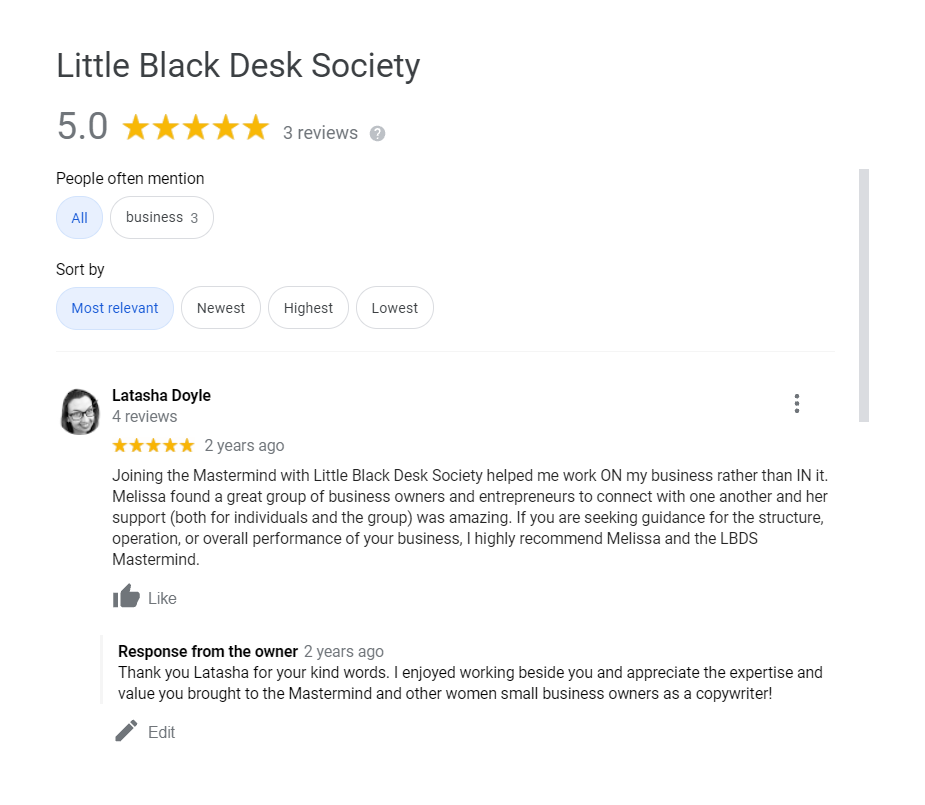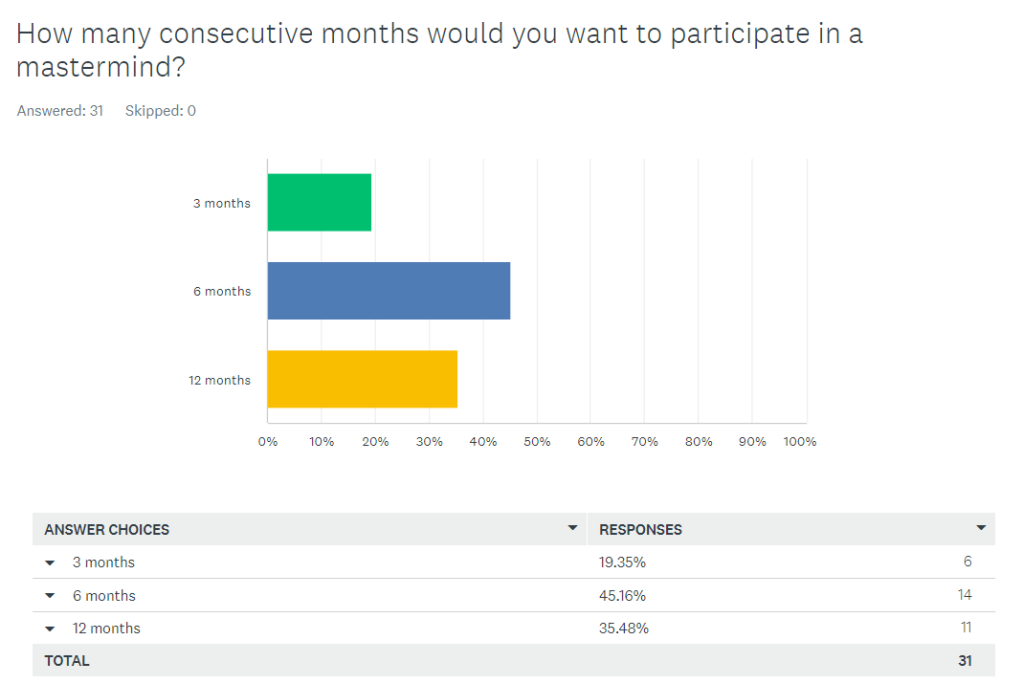Feedback is crucial to growth. It helps you understand what’s working and what’s not. There are multiple ways to collect feedback. I am going to share the 4 types of client feedback I use frequently and how I use them. These don’t replace regular 1:1 conversations with your clients.
Comments
Look at what are people saying in your comments and DM’s. What resonates with them? Are there topics they want to see more of? What questions are they asking? These are all different forms of social feedback that can be used to develop and refine services, digital products, and content.
If you don’t have a lot of comments or DMs, yet, read the comments under posts from others in your industry. It may spur ideas for what the market needs.
Reviews
Clients leave reviews about their experience on marketplaces (CreativeMarket, Etsy, Facebook) and review sites (theKnot, Yelp). Reviews are typically written after delivery or once the service has been completed. The client rates their experience, shares details, and post photos, if applicable.
A review provides insight into your client’s experience from their perspective. All reviews, both positive and negative, should receive a response. Positive reviews are an opportunity to reconnect, show gratitude, and find brand ambassadors. Negative reviews are an opportunity to acknowledge frustrations and learn so you can continue to refine the client experience.

Potential clients search for reviews before making a purchase to read about your clients’ experiences. They are forming opinions based on the reviews and your response to or lack of. Reviews provide social proof for the quality of service you provide.
📌 TIP: Make requesting reviews part of your client process checklist. You can include a link to leave a review in a digital document, payment receipt, or closing packet.
Surveys
Surveys can be used throughout the client experience to gather feedback. I love surveys because they help quantify feedback and make it measurable. It’s the difference between one vocal person and nine satisfied but silent clients. Surveys also allow participants the opportunity to be more candid.

Best Practices
- Keep surveys brief. 10 or fewer questions.
- Include questions that make it easy to quantify and for the client to respond. Questions such as multiple-choice, ranking, checkboxes, drop-down, sliding scale, etc.
- For detailed feedback, ask open-ended (how, what, why) questions.
- Ask unbiased questions. (ex: Overall, how satisfied or dissatisfied were you with your service?) This allows a truer range of authentic feedback for you to learn and grow your business.
A favorite and trusted resource for creating surveys is SurveyMonkey. Whether you’re conducting client satisfaction or market research, they have a bank of questions to choose from.
Testimonials
Testimonials are ideal for marketing. However, they take more effort and time. Testimonials are gathered from clients who loved their experience with you and want to share their story. You can share their story with a case study or video.
The key to gathering testimonials is to make it easy for your client to respond. Include questions for them to answer that address key elements you want to highlight when marketing your business.
Example Questions
- Tell me about a specific time when __________ was able to help you/your business.
- How is ________ different from other __________ service providers?
- How would you describe __________ to a friend?
Testimonials are great to use on service pages, lead pages, social media campaigns, newsletters, etc. I find testimonials are most effective when placed in line beside your marketing copy. They’re the supporting actress or wing woman to your message.
How to Use Client Feedback
Soliciting and accepting feedback brings challenges. Focusing only on the positive creates blind spots. Putting too much emphasis on the negative can hinder confidence and momentum.
Read feedback when you have a clear head. If you’re stressed, tired, or hungry, you may be more reactive to feedback. If you feel triggered, wait 24 hours (sleep on it) before responding so you don’t say something you might regret.
Remember feedback is subjective and defines a specific experience with a specific client in time. Individual feedback does not define you or your business as a whole. Look at feedback collectively and the larger story it tells. What is your business doing well and where does it have an opportunity to grow?
Use your mission and values to filter feedback. What feedback can help us achieve our mission? What feedback aligns with living our values?
Some feedback will need an immediate response. Other feedback can be used in quarterly planning meetings for improving client experience, product or service development, etc.
It helps to acknowledge feedback and keep clients updated on changes. When clients feel heard and appreciated you strengthen your relationship with them. This encourages the feedback loop and creates more engagement.
Need help collecting feedback? Let’s chat!





